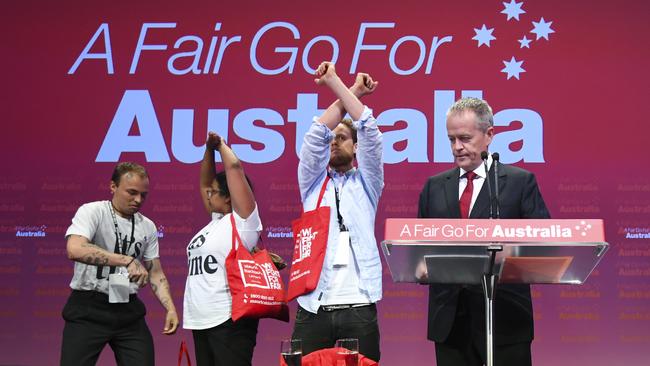It’s going to be an expensive election

Elsewhere the MYEFO papers were being printed with duelling spending promises from the government.
In each case that was just the beginning of what is likely to be one of the most spendthrift election campaigns in history, because a $10-plus billion revenue windfall has hit the budget in 2018.
The irony? That much of the revenue windfall has come from coal, the object of so much angst, and it is ominous because for that reason there’s a good chance we are in for a second dose of what happened between 2004 and 2008.
Those years saw a commodity-led budget windfall that produced big budget surpluses as well as big, permanent, increases in spending as the Howard government tried to buy a fifth term.
Unfortunately, the increase in revenue proved to be a lot less permanent than the spending, as the terms of trade collapsed, locking in 11 deficits and taking public debt from nothing to $350 billion.
The current increase in revenue will be temporary as well, not for the same reason as the last time but the effect is likely to be the same, if not worse.
The reason tax revenue collapsed last time was the GFC in 2008 followed by the devastating breakdown in commodity prices in 2011-12.
This time is likely to be different, but the same: China’s economy is in a structural slowdown, as evidenced by Friday’s latest batch of data, and the world is moving away from coal.
That’s not because of protests like the anti-Adani ones in Adelaide on Sunday, but because the Paris Agreement on emissions reduction was further solidified at COP24 in Poland on the weekend and because the cost of renewable energy has fallen to below that of coal.
The price of thermal coal has been falling since July after a strong rise in the previous 12 months.
Obviously the revenue windfall revealed in MYEFO is not entirely, or even mostly, due to thermal coal, but that’s an important part of it.
The rest of it is iron ore, coking coal and LNG, exports of which to China have been growing strongly this year, in both price and volume. There is now a question mark over how long that will last.
But for the moment, things couldn’t be better. Treasury’s estimate of nominal GDP – the main driver of taxation revenue – was previously 3.75 per cent for 2018-19. Thanks to the stronger than anticipated terms of trade, that’s now much higher, and the deficit is shrinking faster than it did in the early 2000s.
As a result of that, the government now has a whopping war chest for the 2019 election and of course the Labor Party has the same chest, plus a bit more because of “tough decisions” on dividend franking, negative gearing and capital gains tax.
There can be nothing worse for the health of future budgets than the combination of a temporary lift in tax revenue and a federal election, especially one where a Coalition government is well behind in the polls and likely to lose, and is going to bring down a pre-election budget.
That’s because like the MYEFO, the April budget will contain more actual locked-in spending increases, not just campaign promises – like the pre-election budget of 2007 did - and then on top of that we get the campaign promises of the Labor Party on top of those spending increases in the budget, after they win the election.
And then we get the cyclical commodity downturn as China’s economy almost certainly continues to slow down, this time with an Australian property collapse and likely household consumption recession, plus a global agreement on carbon emissions, thrown in.
It could be a very expensive election indeed.
* Alan Kohler is Editor in Chief of InvestSMART





It was a nice, if ominous, irony that while Opposition Leader Bill Shorten was inside the Adelaide Convention Centre on Sunday promising more government spending when he becomes PM, protesters were outside, and inside, promising to fight the Adani coal mine, and coal mining generally.